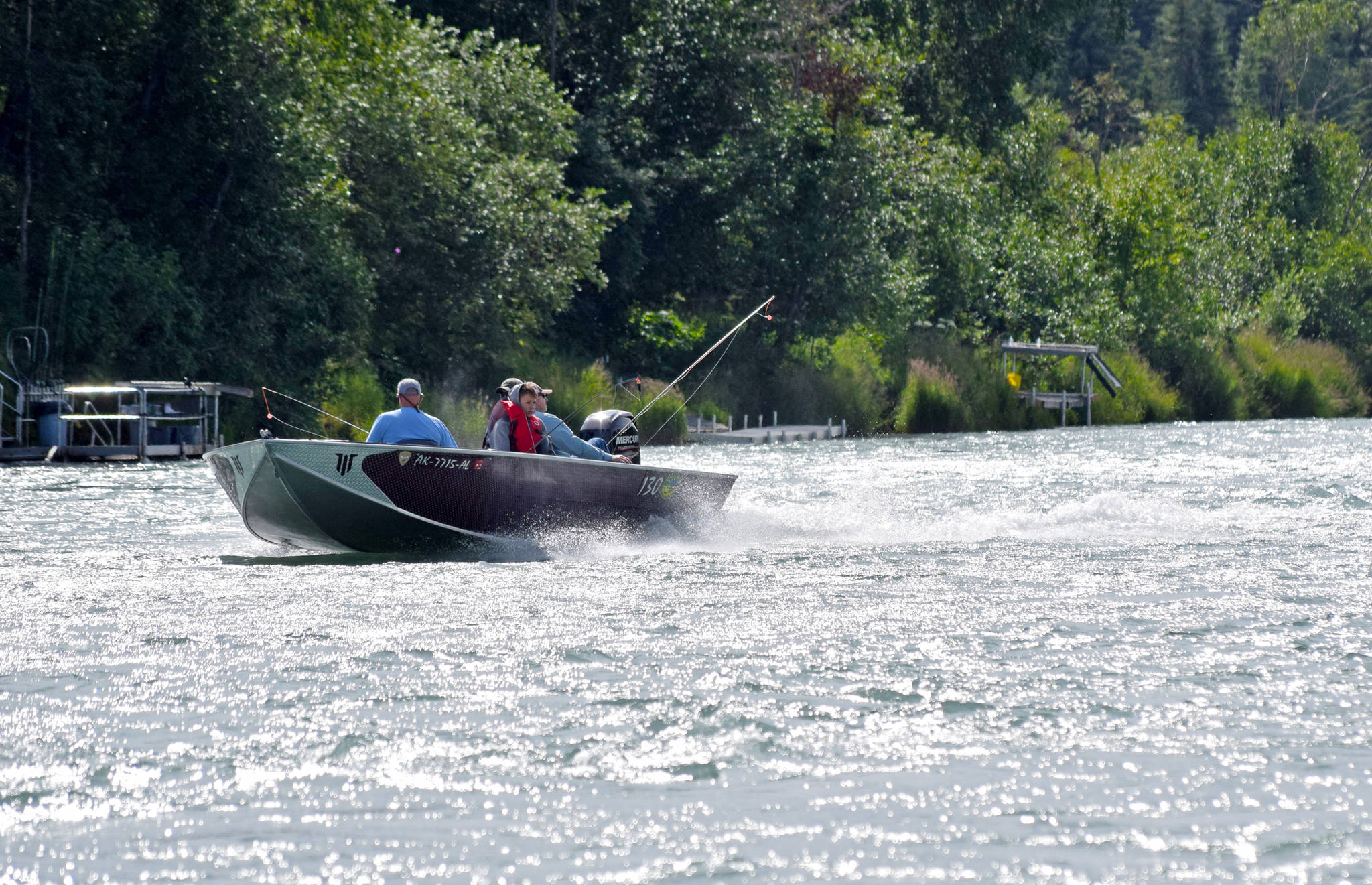The Alaska Department of Fish and Game is closing the Kenai River entirely to sockeye salmon fishing for the rest of the season.
Effective Saturday at 12:01 a.m., the main stem of the Kenai River from the mouth upstream to the Sterling Highway Bridge at the outlet of Kenai Lake will be closed to sockeye fishing, with the exception of the waters of the mainstem around the confluence of the Russian River.
This year has proven exceptionally poor for sockeye on the Kenai, which typically produces one of the largest sockeye runs in the region. As of Tuesday, 453,136 sockeye had passed the sonar on the Kenai River, just over halfway to the bottom end of the sustainable escapement goal of 700,000–1.2 million fish.
“The department doesn’t take this action lightly,” said Sport Fish Cook Inlet Management Coordinator Matt Miller in a release announcing the closure Wednesday. “This fishery is important economically to the community and important to Alaskans trying to put salmon on the table; but when projections indicate we won’t make the escapement goal, we have to take that final action and close the fishery.”
The Russian River sockeye salmon fishery will remain open — projections show that the late run is likely to meet its escapement goal. Despite poor returns on the Kenai, the early run of Russian River sockeye came in strong, passing the upper end of the escapement goal even with increased bag limits and additional fishing areas. The late run is about 20 percent through the weir, based on historical run timing, and with 19,232 fish through the weir on Lower Russian Lake s of Tuesday, the run looks likely to be strong, according to the release.
Fish and Game closed the Kenai River dipnet fishery two days early and restricted in the inriver sportfishery bag limit to one sockeye instead of the usual three for the same reason. Commercial fishing hours in Cook Inlet were cut back after Fish and Game reevaluated the sockeye run July 24 as less than 2.3 million total fish.
Both the set gillnet and drift gillnet fleets in Upper Cook Inlet will be closed Thursday to reduce Kenai River sockeye harvest, according to an emergency order issued Wednesday. As of July 30, commercial fishermen in Upper Cook Inlet had harvested 770,042 sockeye salmon.
Sockeye runs across the Gulf of Alaska have struggled or severely underperformed this season so far, leading to abrupt closures and disaster requests. Biologists are connecting the collapse possibly to the presence of an abnormally warm patch of water in the Gulf of Alaska when this year’s sockeye first outmigrated, nicknamed as “the Blob.” They also linked the disastrously low pinks salmon returns in 2016 to the effects of the Blob.
This is the first time in recent memory the sockeye salmon fishery has been completely closed on the Kenai, said Ricky Gease, the executive director of the Kenai River Sportfishing Association. Early in the season, the association asked Fish and Game to manage the river conservatively for kings because of poor returns, and then later asked Fish and Game and Gov. Bill Walker to restrict sockeye fishing until the escapement goal had been met in the Kenai River, Gease said.
Guides and anglers will likely be targeting silver salmon in the Kenai, as silver salmon fishing opened Aug. 1, as well as pink salmon and trout, he said.
“People are also directing (anglers) to go out to salt water, and I’m sure the guys flying to the west side of the inlet are fully booked,” he said.
Reach Elizabeth Earl at eearl@peninsulaclarion.com.

